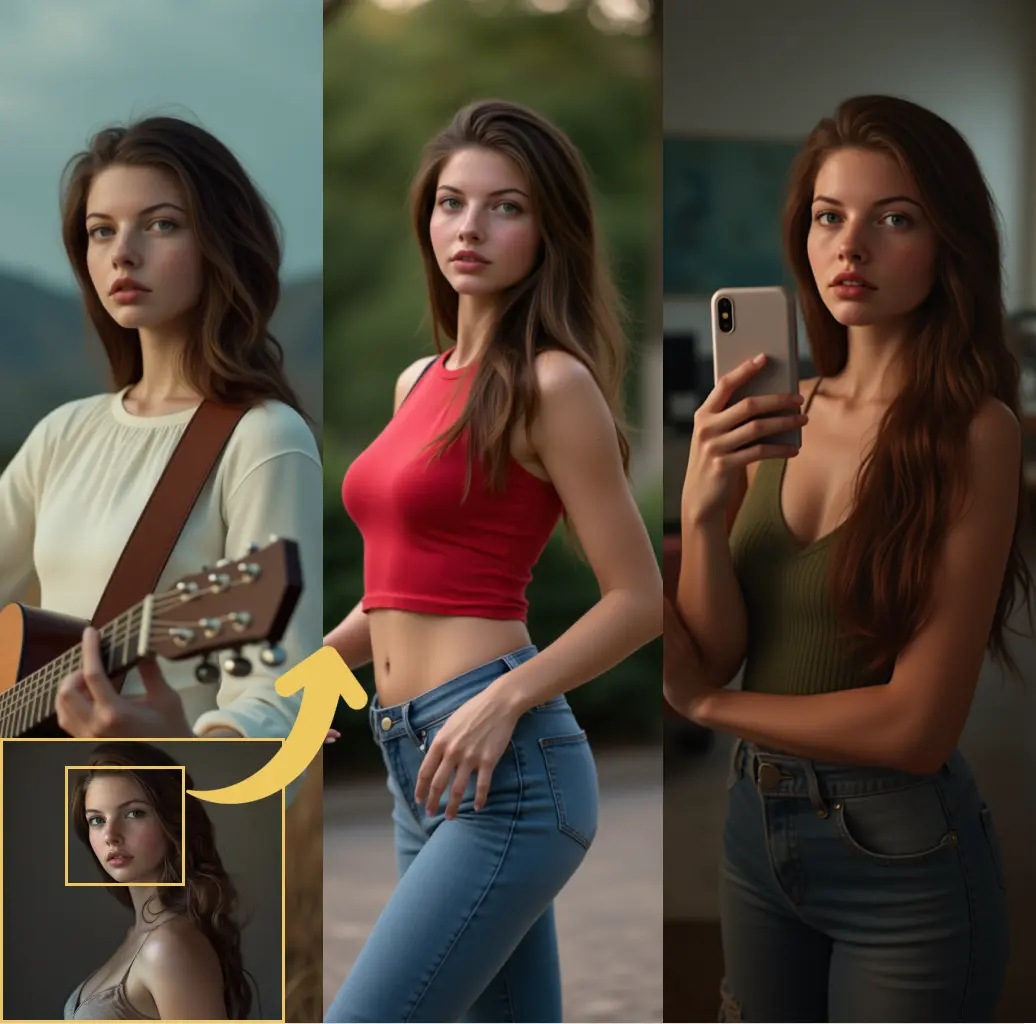ComfyUI Node: Apply PuLID Advanced
ApplyPulidAdvanced
Categorypulid
cubiq (Account age: 5296days) Extension
PuLID_ComfyUI Latest Updated
2024-10-05 Github Stars
0.83K
How to Install PuLID_ComfyUI
Install this extension via the ComfyUI Manager by searching for PuLID_ComfyUI- 1. Click the Manager button in the main menu
- 2. Select Custom Nodes Manager button
- 3. Enter PuLID_ComfyUI in the search bar
Visit ComfyUI Online for ready-to-use ComfyUI environment
- Free trial available
- 16GB VRAM to 80GB VRAM GPU machines
- 400+ preloaded models/nodes
- Freedom to upload custom models/nodes
- 200+ ready-to-run workflows
- 100% private workspace with up to 200GB storage
- Dedicated Support
Apply PuLID Advanced Description
Enhance AI-generated images with advanced PuLID techniques for improved quality and control.
Apply PuLID Advanced:
The ApplyPulidAdvanced node is designed to enhance your AI-generated images by applying advanced PuLID (Perceptual Loss for Image Denoising) techniques. This node leverages multiple models and parameters to refine and improve the quality of your images, focusing on aspects such as fidelity, noise reduction, and projection methods. By integrating various inputs like EVA_CLIP, face analysis, and attention masks, ApplyPulidAdvanced provides a comprehensive tool for achieving high-quality, perceptually enhanced images. This node is particularly beneficial for AI artists looking to fine-tune their creations with precise control over the enhancement process, ensuring that the final output meets their artistic vision.
Apply PuLID Advanced Input Parameters:
model
This parameter expects a model that will be used for the image enhancement process. The model should be pre-loaded and compatible with the PuLID framework.
pulid
This parameter requires a PuLID model, which is essential for applying the perceptual loss techniques to the image. The PuLID model helps in refining the image quality by focusing on perceptual aspects.
eva_clip
This parameter takes an EVA_CLIP model, which is used for additional image processing and enhancement. The EVA_CLIP model contributes to the overall quality and fidelity of the output image.
face_analysis
This parameter requires a face analysis model, which is used to analyze and enhance facial features in the image. This is particularly useful for images with human subjects, ensuring that facial details are accurately and aesthetically enhanced.
image
This parameter expects the input image that you want to enhance. The image should be in a compatible format and will be processed using the provided models and parameters.
weight
This parameter controls the intensity of the enhancement applied to the image. It accepts a float value with a default of 1.0, a minimum of -1.0, and a maximum of 5.0, with a step of 0.05. Adjusting this value will affect the strength of the perceptual loss applied.
projection
This parameter allows you to choose the projection method for the enhancement process. The available options are "ortho_v2", "ortho", and "none". Each option provides a different approach to projecting the enhancements onto the image.
fidelity
This parameter controls the fidelity of the enhancement process. It accepts an integer value with a default of 8, a minimum of 0, and a maximum of 32, with a step of 1. Higher values result in higher fidelity and more detailed enhancements.
noise
This parameter controls the amount of noise to be added or reduced during the enhancement process. It accepts a float value with a default of 0.0, a minimum of -1.0, and a maximum of 1.0, with a step of 0.1. Adjusting this value can help in fine-tuning the noise levels in the output image.
start_at
This parameter defines the starting point of the enhancement process as a fraction of the total process. It accepts a float value with a default of 0.0, a minimum of 0.0, and a maximum of 1.0, with a step of 0.001. This allows for precise control over when the enhancement begins.
end_at
This parameter defines the ending point of the enhancement process as a fraction of the total process. It accepts a float value with a default of 1.0, a minimum of 0.0, and a maximum of 1.0, with a step of 0.001. This allows for precise control over when the enhancement ends.
attn_mask (optional)
This optional parameter allows you to provide an attention mask, which can be used to focus the enhancement process on specific areas of the image. This is useful for targeted enhancements and ensuring that particular regions receive more attention.
Apply PuLID Advanced Output Parameters:
model
The output of this node is the enhanced model, which has been processed using the provided inputs and parameters. This model can be used for further image generation or enhancement tasks, ensuring that the final output meets the desired quality and perceptual standards.
Apply PuLID Advanced Usage Tips:
- Experiment with the
weightparameter to find the optimal intensity for your image enhancements. Higher weights can result in more pronounced effects, while lower weights provide subtler enhancements. - Use the
fidelityparameter to control the level of detail in your enhancements. Higher fidelity values are ideal for images where fine details are crucial. - Adjust the
start_atandend_atparameters to control the duration of the enhancement process. This can help in focusing the enhancements on specific parts of the image generation timeline.
Apply PuLID Advanced Common Errors and Solutions:
"Model not compatible"
- Explanation: The provided model is not compatible with the PuLID framework.
- Solution: Ensure that the model is pre-loaded and compatible with the PuLID framework before using it in this node.
"Invalid parameter value"
- Explanation: One or more input parameters have values outside the acceptable range.
- Solution: Check the parameter values and ensure they fall within the specified ranges. Adjust the values accordingly and try again.
"Missing required input"
- Explanation: One or more required input parameters are missing.
- Solution: Ensure that all required input parameters are provided and correctly specified before executing the node.
"Error in face analysis model"
- Explanation: The face analysis model encountered an issue during processing.
- Solution: Verify that the face analysis model is correctly loaded and compatible with the input image. Re-load the model if necessary and try again.
Apply PuLID Advanced Related Nodes
RunComfy is the premier ComfyUI platform, offering ComfyUI online environment and services, along with ComfyUI workflows featuring stunning visuals. RunComfy also provides AI Playground, enabling artists to harness the latest AI tools to create incredible art.



